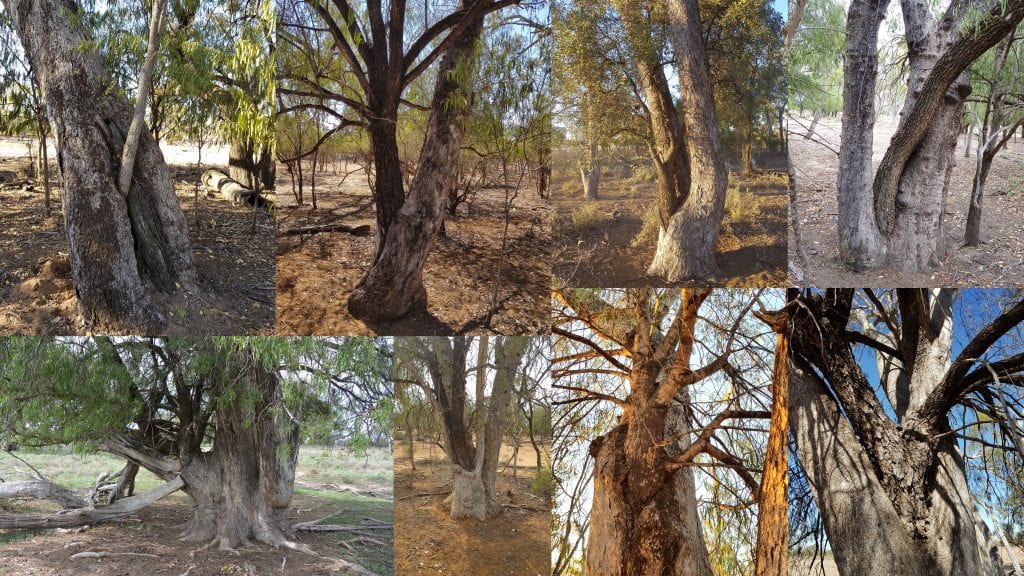Sometimes you can be reading a book totally unconnected with your own concerns when a particular passage utterly undoes you. I’m reading Ruth Park’s autobiography – A fence around the cuckoo – about her New Zealand childhood. She is remembering some bushland in the Hauraki Gulf… “It was not for nothing that many races conducted their religious ceremonies in sacred groves. Amongst trees the mind quietens, the sediment of anxiety and obsessive thought sinks to the depths; you become aware that you are not only breathing in the Universe – the Universe is also breathing you. In the company of these grave, pacific creatures you sometimes experience a blazing flash of insight, a psychic shock, when argument and emotion disappear and you see things as they really are.”
How perfectly she has described what it feels like to be standing in some secluded bush dell with the old Gargaloo vines trailing from dilapidated eucalypts like last year’s Christmas streamers. Deep puckered heartwood scars offer up their antecedence like race memory. Still and silent yet somehow murmuring. The people of the past will not be hushed here. Humanity unites us, sharing a place if not a time. Everything converges in these locations and our animating spirits connect in a way both immortal and unfathomable. The universe breathes you … like some big cosmic echidna then waddles off on its own affairs. I am a guest not an intruder in these evergreen glades. The old fellas see no harm in my heart and tolerate my lack of nous. Abide with me awhile they whisper and absorb the Chi.
Some of these mystical places are spread over an acre or more, close enough to permanent water but not crowded around it. Some have Ringtrees heralding their specialness but often they just feel like home. Convenient comfortable home. The furnishings are in the form local edible fruit trees and old fireplace scars on the leeward side of leaning trunks. Often the low arching branches of an aged coolabah forms the framework of an old shelter. Nearby debarked box trees and their succeeding epicormic branches look like huge upturned stools. The dead center trunk is often dwarfed by consequential regrowth, or has fallen out entirely leaving a small marsupial grotto. Sometimes the obligatory scatter of discarded stone shards will catch your eye. Many signs of generational residence persist but the native orchards and abandoned bivouacs come second to the intrinsic sense of belonging. Long habitation leaves its lingering trace of human presence like ancient perfume and it’s this ‘essence of us’ that calls me.
Another rarer indicator of a cultural core place is the hybrid tree or ‘tree in tree’. This arboreal enigma is so obscure that there is no explanation to be found in traditional knowledge or science. So frustrating is the lack of information that I googled… what is it called when a tree grows out of another tree? Apparently its known as an epiphyte except that term applies mostly to rainforest orchids and airplants. The double tree of Casorzo, Italy is the only other example I can find. The host tree is a bimblebox or blackbox and the ‘guest’ for want of a better word is usually a wilga tree. Thanks to Jason Wilson and his table of Euahlayi/Gamilaroi plants – west of Walgett vegetation mapping- we know the Wilga is a female tree of exceptional value. She is ceremonial, medicinal and spiritual but also very common. Why the wise women wanted to grow her in a living box tree planter like an indigenous form of bonsai is one of those riddles of Aboriginal history. Please feel free to email your thoughts or….come and see the real thing… come and see…

